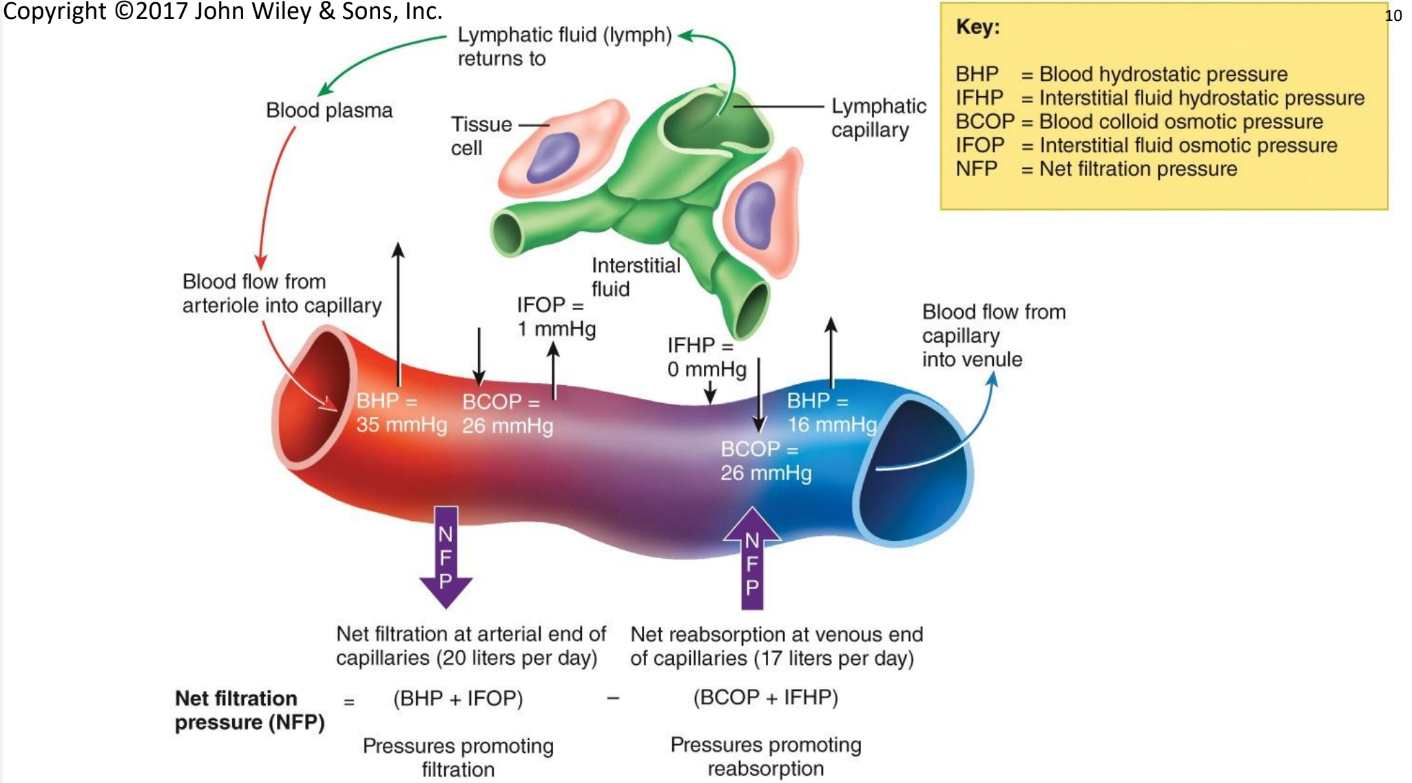bio005 physio Lab 3.3 Blood pressure
1/10
There's no tags or description
Looks like no tags are added yet.
Name | Mastery | Learn | Test | Matching | Spaced |
|---|
No study sessions yet.
11 Terms
Capillary exchange
Substances cross capillary walls by:
Diffusion
Transcytosis
Bulk flow
Diffusion
Substances such as oxygen, carbon dioxide, glucose, amino acids, and some hormones cross capillary walls via simple diffusion
Transcytosis
Large, lipid-insoluble molecules (like insulin) cross capillary walls in vesicles via endocytosis and exocytosis
Bulk Flow
Allows large numbers of ions, molecules, or particles in a fluid move together in the same direction
Bulk flow occurs from an area of higher pressure to an area of lower pressure resulting in filtration and reabsorption
Bulk flow is more important for regulation of the blood and interstitial fluid volumes
Bulk flow is a passive process (no ATP needed)
Hydrostatic pressure vs. colloid osmotic pressure
Hydrostatic pressure = pressure that a liquid puts on
the container that holds it
Colloid osmotic pressure = like a solution, but it’s larger proteins (like the ones in our plasma) that are involved instead of smaller molecules
Bulk Flow: Filtration
Filtration is pressure-driven movement of fluid and solutes from blood capillaries into interstitial fluid
Pressures that promote filtration:
Blood hydrostatic pressure (BHP)
Interstitial fluid osmotic pressure (IFOP)
Bulk Flow: Reabsorption
Reabsorption is pressure-driven movement of fluid and
solutes from interstitial fluid into blood capillaries
Pressures that promote reabsorption:
Interstitial fluid hydrostatic pressure (IFHP)
Blood colloid osmotic pressure (BCOP)
Bulk Flow

Bulk Flow

Starling’s Law of Capillaries
Under normal conditions, the volume of fluid and solutes
reabsorbed is almost as large as the volume filtered
NFP = (BHP + IFOP) − (BCOP + IFHP)
Lymphatic capillaries reabsorb the remaining fluid and
solutes.
Starling’s Law of Capillaries
Edema, a build up of interstitial fluid can be due to:
Increased BHP due to hypertension
Increased capillary permeability due to vessel trauma